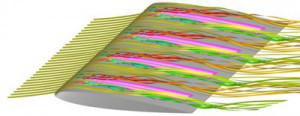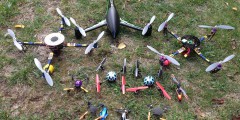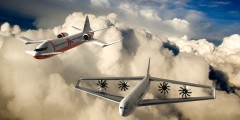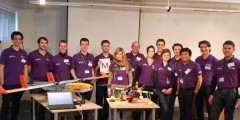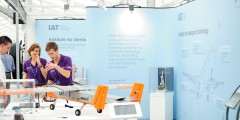Feedback control of unsteady flows: using plasma to improve aircraft aerodynamics
May 14, 2015
Flow control is a fast growing multidisciplinary science aimed at altering a natural flow state into a more desired state, which could be chosen depending on control objectives (e.g. manipulation of flow separation and flow reattachment, drag reduction, noise suppression, etc.). It incorporates essential and non-trivial elements of fluid dynamics, numerical methods and control theory and this is …
Where, When and How can a UAV be used? (Part 1)
April 24, 2015
Are you a big fan of Unmanned Aerial Vehicles (UAV/‘Drones’)? Have you received one as a Christmas or birthday gift? Awesome! But be careful where you decide to fly your new “toy”, as each country has its own regulations for the use of these new and amazing devices. In this article we will explore the …
Future commercial airplanes: what to expect
March 10, 2015
In the last posts, we have discussed the path aircraft industry is following, and in this one, we are presenting some projects that apply the concepts before presented. A couple of months ago, members of the INNOVATE research team had the possibility to attend the IMechE Disruptive Green Propulsion Technologies Conference and more recently the …
What will future aircraft look like?
February 23, 2015
Nowadays travelling by plane has become a common habit. We can reach different continents in a few hours and with an ever increasing level of comfort. That’s even more impressive if one considers that the first flight took place just a little more than a century ago. Since then progress has been made in leaps …
Further enhancement of aircraft performance: still a utopia?
January 26, 2015
The arrival of boundary layer control technologies is closer and closer! The brisk pace with which our climate is changing, and the increased awareness of the limitation of natural fossil fuels are making nations and supra-national organisations take measures to attempt to slow down the actual trend of global warming – the disastrous consequences of …
Aero engine efficiency: how far can we really get?
January 8, 2015
Current aero engine manufacturers are feeling increasing pressure from customers and public institutions to reduce fuel consumption. The need of airline companies to minimise operational costs, coupled with a general pressure to have “greener” engines (as clearly outlined in EU’s ACARE and US’s FAA targets), requires the aero engines industry to be one of the …
Image recognition on a UAV
December 8, 2014
Image recognition on a UAV As part of the Institute for Aerospace Technology’s INNOVATE project, the project team was tasked with the design and build of two fully autonomous UAVs (Unmanned Aerial Vehicles, also known as Unmanned Aerial Systems). The UAVs are described and demonstrated in the March 2014 INNOVATE blog. Researcher Christofas Stergianos explains how one …
INNOVATE Anniversary – A year in a nutshell
November 25, 2014
The INNOVATE project reached yet another milestone on completion of its 1 year on 4th Nov 2014. In many aspects this was a memorable year for everyone involved in the project. For the management board, it was the satisfaction and pride of witnessing their vision take a formal shape in form of the ongoing development …
How Do Aeroplanes Stay Stable in the Sky?
August 19, 2014
Many years of testing and implementing advanced technologies have passed, but most people still wonder how an airplane flies despite air travel representing such a popular mode of transport in the 21st century. In 1895 Lord Kelvin stated that ‘heavier-than-air flying machines are impossible’. It is safe to say that he has been proved definitively …
INNOVATE Launch Event
May 12, 2014
After almost 6 months since the INNOVATE adventure began, it was finally time to launch the project. As each individual INNOVATE team member is aligned to an industrial partner, with which we will spend 6 months on an industrial placement, it was decided that a good way to launch the project would be to invite …

